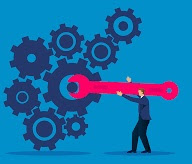Power of Reflections

We discussed the relevance of defining outcomes, reducing the complexity into simplicity, holistic planning, big picture orientation, insights on stakeholder outcomes, reducing changes and minimizing conflicts.
The next principle i personally learned from project management is “ Reflecting from experience.”
What does it mean to reflect?
Reflecting is taking time from regular activities and looking back at the experiences to learn what went right/wrong and the reason for right/ wrong.
This process is more powerful in deep learning as it improves the confidence and assurance of positive actions and helps to learn valuable lessons from failure.
One of the unique concepts of project management is that irrespective of the project's success or failure, once the project is completed, it suggests documenting the key learning from the project.
During the key learning session, the team discusses and documents the practices that helped or affected the projects, relooking at the assumptions, what went right and wrong, etc.
How this practice of reflecting will help any professional?
The reflection process helps any professional who, after completing the task, spends some time thinking about what worked well and what did not work.
One research reveals that the habit of reflection differentiates between extraordinary and mediocre performers, and a person with courage can only do the reflection process. Initially, it will be challenging to reflect on our own mistakes and admit them.
How do we develop the habit of reflection?
- Whenever you finish any major task or milestone, take some time and reflect on the experience. For example, after attending the interview or meeting the new client, think about what you have done well, what could have been done, how you could have responded to the query, etc
- Some people have the habit of writing a journal daily/weekly/monthly, which could help to reflect upon the general experience during the period.
- Along with the team, sharing the experiences will also help to reflect.
An important point is that learning from our own experiences will be powerful learning that can be developed with self-awareness and practice.
Let us summarise key learnings of project management in professional development next week.
Have a great week ahead!




















